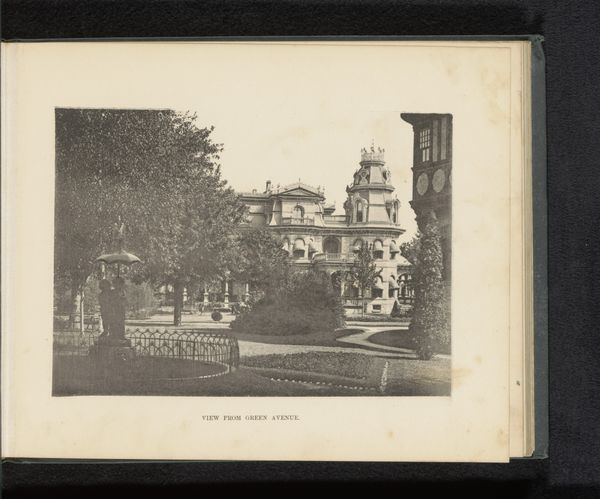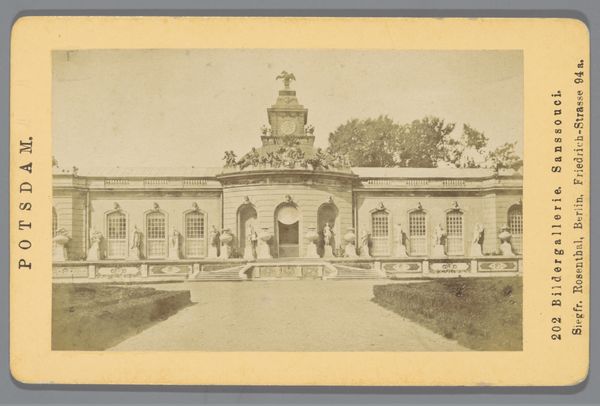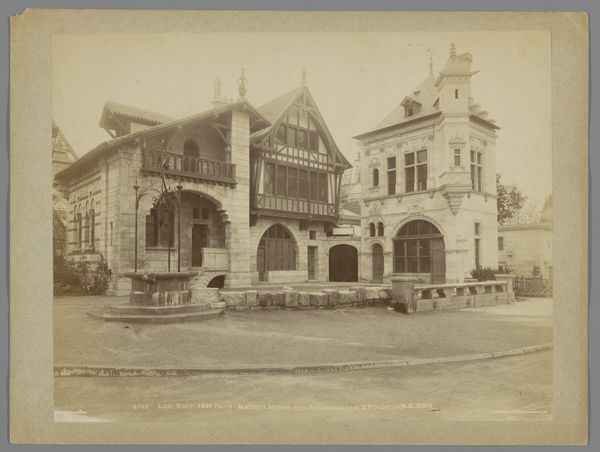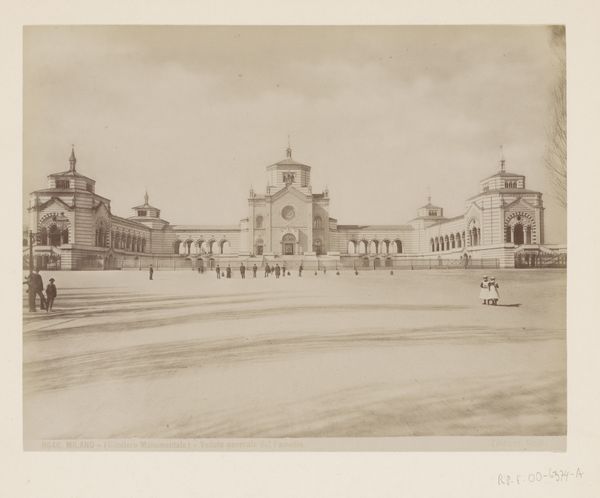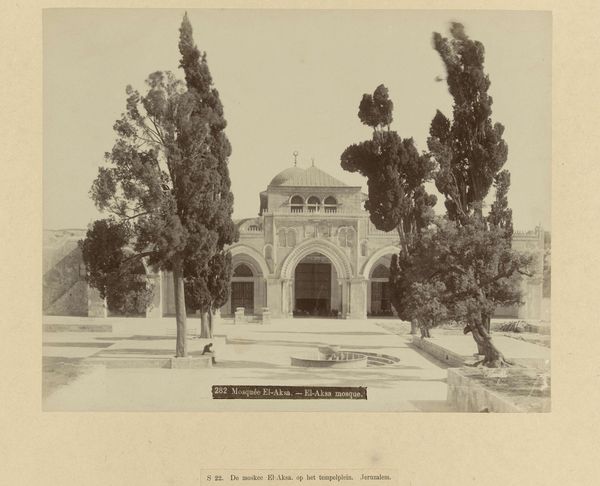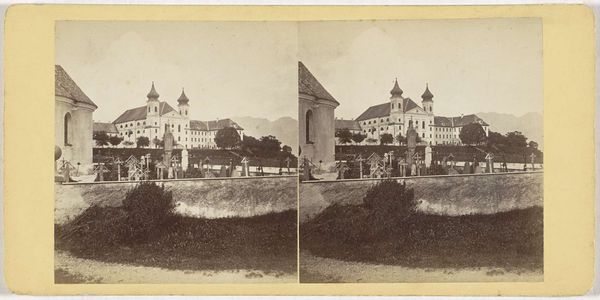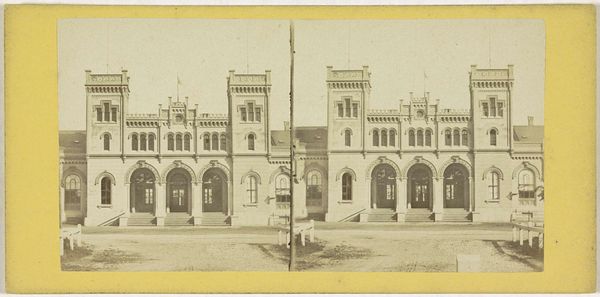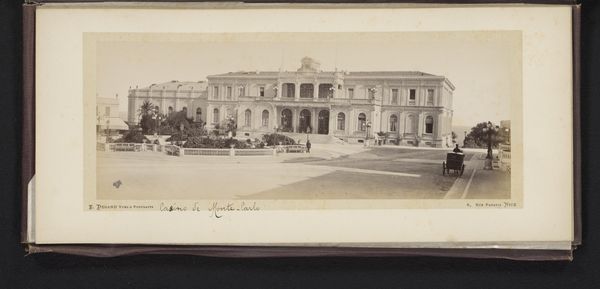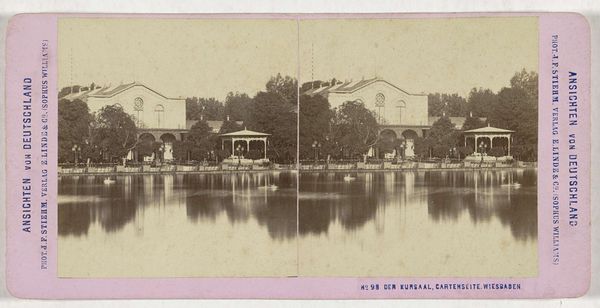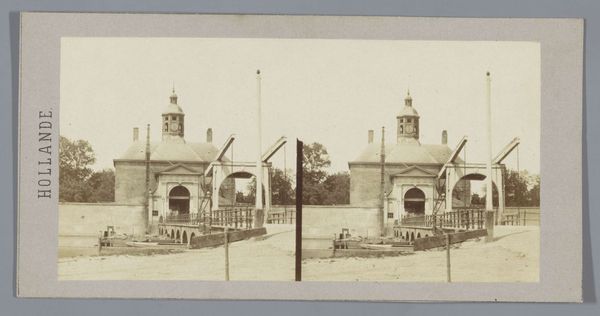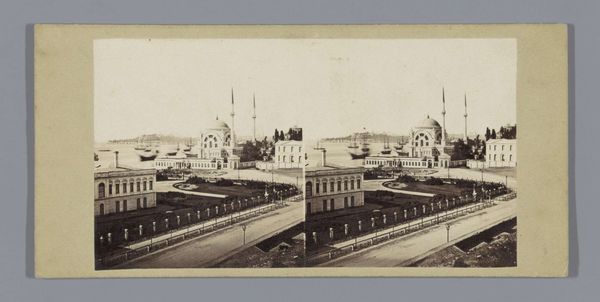
The Great Pagoda in the Imperial Winter Palace, Pekin, October 29, 1860 1860
0:00
0:00
photography, albumen-print
#
16_19th-century
#
asian-art
#
landscape
#
photography
#
orientalism
#
albumen-print
Dimensions: image: 22 × 30.1 cm (8 11/16 × 11 7/8 in.) mount: 24 × 32.5 cm (9 7/16 × 12 13/16 in.)
Copyright: National Gallery of Art: CC0 1.0
Curator: Looking at this albumen print by Felice Beato titled, “The Great Pagoda in the Imperial Winter Palace, Pekin, October 29, 1860,” I feel a strange stillness. It's almost sepulchral, even though the architecture seems so vibrant and intricate. Does it strike you that way? Editor: I do find a melancholy air. This image speaks volumes, of course, not just visually, but historically. Beato, as we know, was documenting the Second Opium War, and the destruction inflicted upon the Summer Palace, also known as Yuan Ming Yuan, during that period. This pagoda, thankfully, remained standing, yet the photo feels laden with an impending sense of loss. Curator: You’re right. I almost missed the political implications. But even removed from its historical context, there's a tension. The way the light falls on the pagoda makes it look almost spectral, perched high on that little hill. It is really remarkable photography. Editor: Absolutely. Beato was undeniably skilled. But the “Orientalism” inherent in these images can't be ignored. Western audiences exoticized China, viewing it through a lens of colonial power. This image, while visually arresting, reinforced those skewed perspectives. Curator: That's an important consideration. Do you think he realized the damage his perspective might be inflicting, even while making skillful work? Or maybe he was just driven by the dollar, which might be an even worse indictment? Editor: It’s complicated. Photographers of the era were simultaneously reporters, artists, and, unfortunately, often agents of empire. These images both documented and participated in the power dynamics of the time. What I appreciate here is how the photo preserves evidence, a perspective we might miss otherwise. Curator: And thinking about the damage that occurred in that time that this photo stands apart is particularly insightful. I also think that it's just, in the end, very cool looking. This really changes my sense of what this means as a photograph. Editor: Indeed. Perhaps seeing Beato’s print of the pagoda as a potent reminder of how historical events can shape both art and our understanding of it, is a first step in making peace with this fraught picture.
Comments
No comments
Be the first to comment and join the conversation on the ultimate creative platform.
